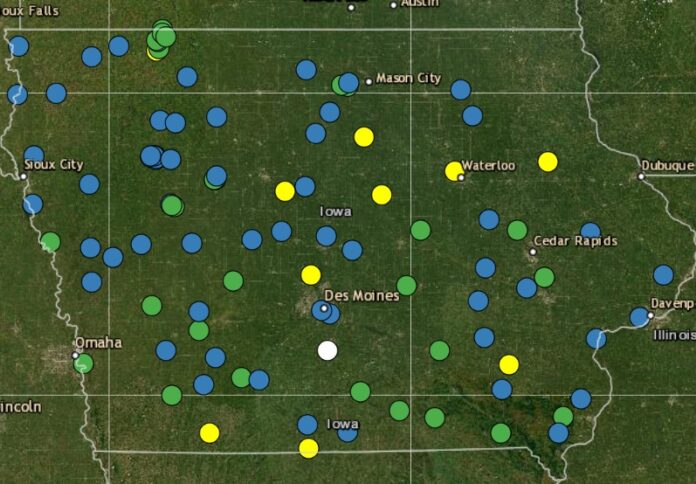From about Memorial Day through Labor Day, the Iowa Department of Natural Resources (DNR) conducts weekly monitoring of bacterial pollution in Iowa’s 39 state park beaches.
The DNR analyzes water samples from the beaches for certain one-celled microorganisms, known as indicator bacteria, that are visible only under a microscope. High levels of E. coli, a common indicator bacteria, indicate feces is in the water. In Iowa livestock are the most common source of feces in surface waters.
These indicator bacteria are commonly used by state environmental agencies and by the U.S. Environmental Protection Agency to determine the suitability of beaches for swimming-type uses.
Microcystin, a toxin produced by harmful blue-green algae blooms, has also been detected in Iowa’s water bodies.
Due to health risks, when microcystin or E. coli levels exceed certain standards/thresholds, the DNR posts swim advisories telling beach-goers to stay out of the water.
The Iowa DNR and the Iowa Environmental Council track these weekly beach monitoring reports and swim advisories and compare advisory trends from year to year. To review recent trend data, visit the Iowa DNR website.
Ten beach advisories for E. coli-related contamination were issued for Iowa beaches for the week of Aug. 5-11.
10 Beaches with an E. coli-related advisory:
- Backbone Beach (Dundee, Delaware County, IA)*
- Beed’s Lake Beach (Hampton, Franklin County, IA)*
- Big Creek Beach (Polk City, Polk County, IA)*
- Brushy Creek Beach (Lehigh, Webster County, IA)*
- Emerson Bay Beach (West Okoboji Lake, Milford, Dickinson County, IA)*
- George Wyth Beach (Waterloo, Black Hawk County, IA)*
- Lake Darling Beach (Brighton, Washington County, IA)*
- Lake of Three Fires Beach (Bedford, Taylor County, IA)* – See note below
- Lower Pine Lake Beach (Eldora, Hardin County, IA)*
- Nine Eagles Beach (Davis City, Decatur County, IA)*
Note: Lake of Three Fires is now open. The Iowa Department of Health and Human Services (HHS), Iowa DNR and the U.S. Centers for Disease Control and Prevention have confirmed the presence of Naegleria fowleri in Lake of Three Fires. HHS and DNR recommend that Iowans assume the amoeba is present and take precautions to limit the amount of water going up recreationists’ noses.
*Data from the Iowa DNR State Park Beach Monitoring Program
**Data from the U.S. Army Corps of Engineers, Rock Island District
















